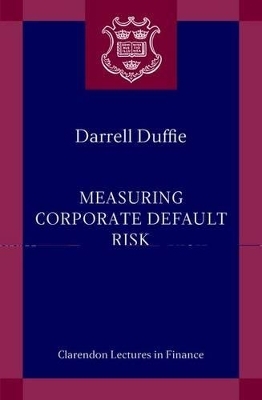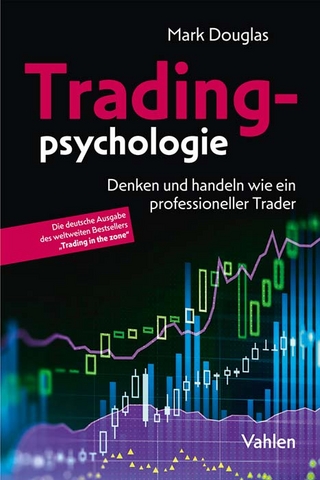
Measuring Corporate Default Risk
Oxford University Press (Verlag)
978-0-19-927923-4 (ISBN)
This book, based on the author's Clarendon Lectures in Finance, examines the empirical behaviour of corporate default risk. A new and unified statistical methodology for default prediction, based on stochastic intensity modeling, is explained and implemented with data on U.S. public corporations since 1980. Special attention is given to the measurement of correlation of default risk across firms. The underlying work was developed in a series of collaborations over roughly the past decade with Sanjiv Das, Andreas Eckner, Guillaume Horel, Nikunj Kapadia, Leandro Saita, and Ke Wang. Where possible, the content based on methodology has been separated from the substantive empirical findings, in order to provide access to the latter for those less focused on the mathematical foundations.
A key finding is that corporate defaults are more clustered in time than would be suggested by their exposure to observable common or correlated risk factors. The methodology allows for hidden sources of default correlation, which are particularly important to include when estimating the likelihood that a portfolio of corporate loans will suffer large default losses. The data also reveal that a substantial amount of power for predicting the default of a corporation can be obtained from the firm's "distance to default," a volatility-adjusted measure of leverage that is the basis of the theoretical models of corporate debt pricing of Black, Scholes, and Merton. The findings are particularly relevant in the aftermath of the financial crisis, which revealed a lack of attention to the proper modelling of correlation of default risk across firms.
Darrell Duffie has been writing about financial markets since 1984. He is a Fellow of the American Academy of Arts and Sciences, a Fellow and member of the Council of the Econometric Society, and a Research Associate of the National Bureau of Economic Research. He is a member of the Financial Advisory Roundtable of the New York Federal Reserve Bank, and a member of the board of directors of Moody's Corporation. Prof. Duffie was the President of the American Finance Association until January, 2010. In 2003, he was awarded the SunGard/IAFE Financial Engineer of the Year Award from the International Association of Financial Engineers.
1. Objectives and Scope ; 2. Survival Modeling ; 3. How to Estimate Default Intensity Processes ; 4. The Default Intensities of Public Corporations ; 5. Default Correlation ; 6. Frailty-Induced Correlation ; 7. Empirical Evidence of Frailty ; A. Time-Series Parameter Estimates ; B. Residual Gaussian Copula Correlation ; C. Additional Tests for Mis-Specified Intensities ; D. Applying the Gibbs Sampler with Frailty ; E. Testing for Frailty ; F. Unobserved Heterogeneity ; G. Non-Linearity Check ; H. Bayesian Frailty Dynamics ; I. Risk-Neutral Default Probabilities
| Erscheint lt. Verlag | 23.6.2011 |
|---|---|
| Reihe/Serie | Clarendon Lectures in Finance |
| Zusatzinfo | 22 Figures, 13 Tables |
| Verlagsort | Oxford |
| Sprache | englisch |
| Maße | 159 x 237 mm |
| Gewicht | 350 g |
| Themenwelt | Wirtschaft ► Betriebswirtschaft / Management ► Allgemeines / Lexika |
| Wirtschaft ► Betriebswirtschaft / Management ► Finanzierung | |
| Betriebswirtschaft / Management ► Spezielle Betriebswirtschaftslehre ► Bankbetriebslehre | |
| Wirtschaft ► Volkswirtschaftslehre ► Finanzwissenschaft | |
| Wirtschaft ► Volkswirtschaftslehre ► Ökonometrie | |
| ISBN-10 | 0-19-927923-3 / 0199279233 |
| ISBN-13 | 978-0-19-927923-4 / 9780199279234 |
| Zustand | Neuware |
| Haben Sie eine Frage zum Produkt? |
aus dem Bereich


